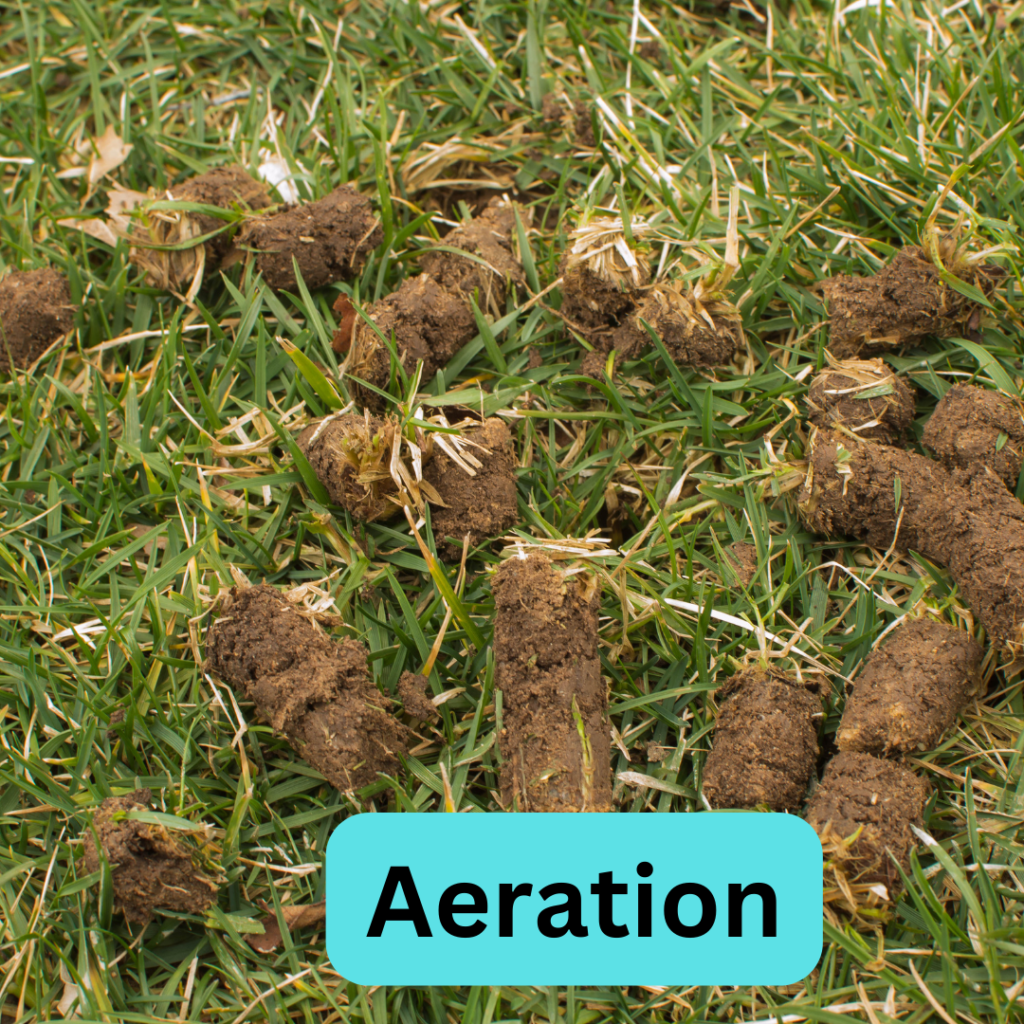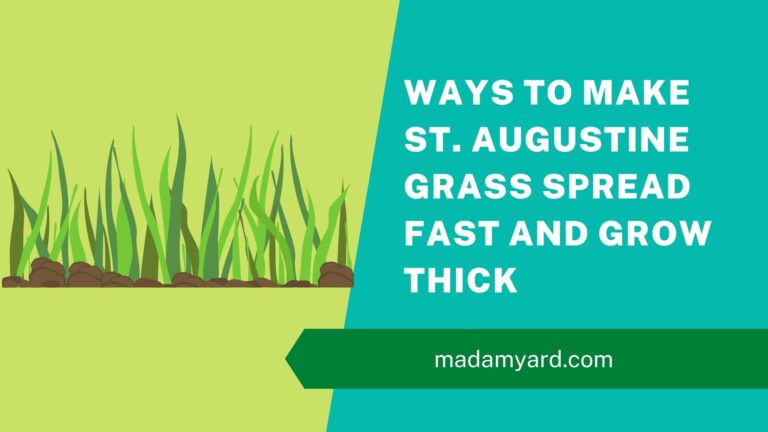The Benefits of Aeration & Overseeding Your Lawn
Besides improving your home’s curb appeal, maintaining lush green grass has many practical advantages. The visual attractiveness and market worth of a home are both boosted by a healthy, flourishing lawn. Aeration and overseeding are two best maintenance practices for a healthy, lush lawn.
Small plugs of dirt are extracted from the lawn during aeration to improve the grass’s access to oxygen, water, and nutrients at its base. A lawn can be overseeded to increase its density and aesthetic appeal by sowing new grass seed onto an already established lawn.
Your lawn’s health and look can benefit from combining these two practices. To maximize water and nutrient absorption, decrease compaction, and encourage more robust root development, aerating the soil is an essential first step. Lawn overseeding has many benefits, including a thicker, healthier turf with less vulnerability to weeds and pest invasions.
This article will discuss the value of aeration and overseeding and their complementary nature in keeping a lawn in good condition. It doesn’t matter if you have a small lawn in your backyard or a vast grass in your front yard; these tips will help you maintain a beautiful lawn all year.
Benefits from Aeration and Overseeding
Benefits of Aeration

If you want a lush, green lawn, you need aeration. The roots of your grass will get more oxygen, water, and nutrients if you aerate the soil by removing small plugs of soil. A healthier and more robust grass results from this since it aids in improving soil structure and encouraging deeper root growth. The benefits of aerating are discussed in greater depth in the following sections.
1. Improve Soil Structure
One of the benefits of core aeration is to improve soil structure. Soil aeration is a method of releasing soil particles so that air, water, and nutrients can more easily reach plant roots, hence reducing soil compaction. This leads to a healthier soil structure, giving your grass better drainage and nutrient uptake.
Roots can find it more challenging to break through compacted soil and take in water and nutrients, especially in high-traffic areas. Compacted soil is less conducive to root growth and development, but after being aerated, things improve significantly.
2. Increases Diffusion of Water and Absorption of Nutrients
Aeration improves the grass’s health by allowing more oxygen, water, and nutrients to reach the grass’s roots. Because of this, plants can absorb more water and nutrients, resulting in stronger, more robust growth. Water runoff can be drastically reduced through aeration, which is especially useful in high-rainfall regions.
3. Reduces Compaction
Lawn owners often find that compaction is their greatest obstacle. When soil particles become too closely packed, a condition known as “compaction,” it becomes more challenging for roots to penetrate the soil and get necessary nutrients and water.
Compaction is lessened through aeration, which breaks up the soil and lets it breathe. That means healthier grass with stronger roots!
4. Causes Roots to Grow More Deeply
When you aerate your lawn, you create areas where oxygen, water, and nutrients may easily reach the grass’s roots, encouraging it to grow deeper. Plants with deeper roots are hardier and better able to withstand adverse conditions, such as prolonged drought or flooding. This results in stronger, more resilient grass, able to survive the elements for longer.
Aeration is a must if you want to keep your lawn lush and green. The benefits of lawn aeration soil are numerous, including better soil structure, greater water and nutrient absorption, less soil compaction, and stronger, more deeply rooted plants. Aerating your lawn is a great way to ensure that it stays healthy and beautiful throughout the year, regardless of the size of your lawn.
Benefits of Overseeding
By spreading fresh grass seed over an established lawn, you can increase its density and enhance its beauty. This method can patch your grass and make it look fuller and healthier. We shall discuss the advantages of overseed your lawn in this section.
1. Thick Lawn
By scattering fresh grass seed over an established lawn, overseeding can make your grass thicker. As a result, the grass is thicker, greener, and more resistant to weeds and pests. Because thicker grass is better at holding in soil, this method is beneficial in places with a lot of rain.
2. Increases Grass Density
The overseeding involves sprinkling additional grass seed into an already established lawn to make it denser. This makes for grass that can survive things like drought and flooding. Denser lawns are more sustainable since they use less water through evaporation and transpiration.
3. Adds to One’s Appearance as a Whole
A lawn that has been overseeded can seem better all around since bare or thin sections have been remedied. Your home’s curb appeal and value will both enhance as a result of a more consistent and attractive lawn.
4. Helps Prevent Weed and Pest Infestations
As a result of the increased grass density, overseeding can assist in reducing the occurrence of weeds and pests. Weeds and pests have a more challenging time taking hold of a lawn with a higher grass density. A healthier, more vibrant lawn that is less susceptible to problems is the result.
Overseeding, in conclusion, is a highly effective method for sustaining lush green grass. Overseeding has many positive effects on a lawn, including making it look better, protecting it against weeds and pest invasions, and increasing the thickness and density of the grass. If you want your grass to look great year-round, whether a small backyard patch or a huge expanse, overseeding should be part of your regular lawn care routine.
When Is the Best Time to Have Your Lawn Aerated and Overseeded?
The best time to aerate your lawn is typically in the late summer or early fall. This timing is ideal for your lawn because it allows the grass to recover from any damage caused by heat, drought, or foot traffic during the summer months.
Following aeration, it’s a good idea to overseed your lawn with cool-season grasses. These grasses grow best in cooler temperatures, filling in any weak spots or bare patches in your lawn while providing additional protection against weeds.
Conclusion
Overall, a thick green lawn can benefit greatly from aeration and overseeding. Overseeding provides fresh grass seed to the current grass, raising the density and filling up bare or thin places. At the same time, aeration helps to improve soil structure and create spaces for air, water, and nutrients to reach the roots.
This combination of practices results in a thicker, denser, and healthier lawn, less vulnerable to weed and pest infestations, more able to withstand stress and extreme weather, and more aesthetically beautiful.
Whether you just have a little lawn in your backyard or an expansive one, aerating and overseeding are two lawn care practices that can help keep your grass looking great year-round. Aeration and overseeding can take your grass maintenance to the next level.







